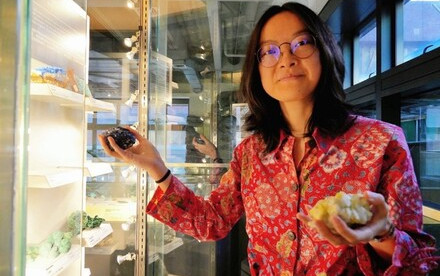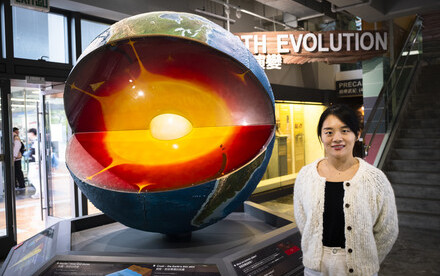29 Jul 2021
Restoring Hong Kong’s Whale’ Campaign
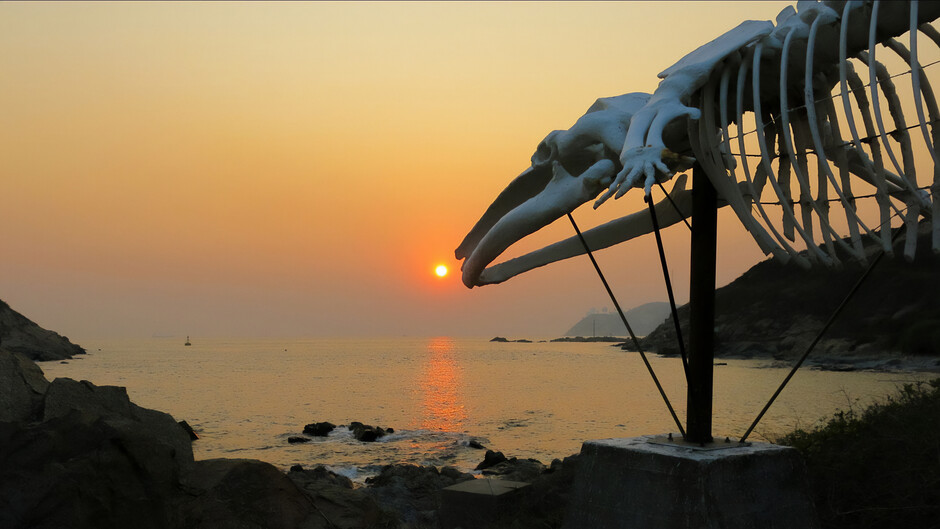
The fin whale skeleton, the symbol of marine conservation that has been sitting on the shore beside SWIMS for 3 decades. Photo credit: Dr Jacky Ip
Riding on the re-opening of the Swire Institute of Marine Science (SWIMS), Faculty of Science of The University of Hong Kong(HKU) on 28th July, 2021, the institute also launches the ‘Restoring Hong Kong’s Whale’ Campaign on the same day, to restore the fin whale skeleton, the symbol of marine conservation that has been sitting on the shore at Cape d’Aguilar beside SWIMS for 3 decades, in the hope of revitalising the icon and appealing for support to educational activities.
A baby whale lost its mother in the sea
In the summer of 1955, a baby Fin whale was discovered in Hong Kong waters. It was first seen floating among the pilings under Ming Shan Wharf in Victoria Harbour. The young male was, sadly, separated from its mother while migrating north from the South China Sea and was slowly starving. After marine police euthanised the whale, it was towed to Aberdeen where it was processed by HKU zoologists. The skeleton was preserved and displayed across several buildings on the HKU campus, out of sight of the sea, for the following 35 years. To help return the whale to the seashore, the skeleton underwent a year-long reconstruction and was found a new home on the shores of Cape d’Aguilar next to the newly established Swire Marine Laboratory in 1991, overlooking the South China Sea since then.
Storm Damage
Unfortunately, the Hong Kong’s whale suffered major damage during 2018’s super typhoon, Mangkhut, which ravaged Hong Kong with 170 km/hr wind gusts for over two days. The supportive structures connecting the bones were bent by the storm’s incessant winds, causing many of the ribs to crack, the lower right jawbone was dislodged and the left hip bone blown away. After the storm, despite remedial efforts, the whale continues to deteriorate on the exposed, sun baked rocks of Cape d’Aguilar.
The Whale’s Rebirth
With the reopening of SWIMS, Hong Kong’s whale will undergo its first restoration initiative in twenty years and be re-born as a symbol for marine conservation. The original bones will be preserved in the SWIMS biodiversity collection while new bones of 1:1 size designed to withstand typhoon winds, salt spray, and Hong Kong’s hot summer sun for many years will be 3D printed using state of the art technology. The campaign aims to support the recreation of the whale skeleton, as a figurehead for SWIMS research and education efforts to conserve Hong Kong’s marine environment. As such, the whale will be named to celebrate its ‘re-birth’.
Restoration Campaign
This ‘Restoring Hong Kong's Whale’ campaign focuses on raising funds to restore this icon of Hong Kong back to its original glory, to contribute towards marine conservation in Hong Kong and to support outreach activities at SWIMS. Donors can get a chance to vote for their favourite name for the baby whale, which will be remembered generations from now. To show the sincere gratitude of HKU and SWIMS, a small-scale 3D printed replica of the whale will be given to donors with contributions of HK$8,000 or above. Souvenirs will be offered while stock lasts.
Click here to donate.
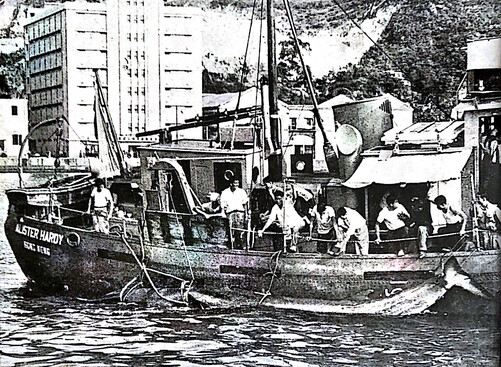 | 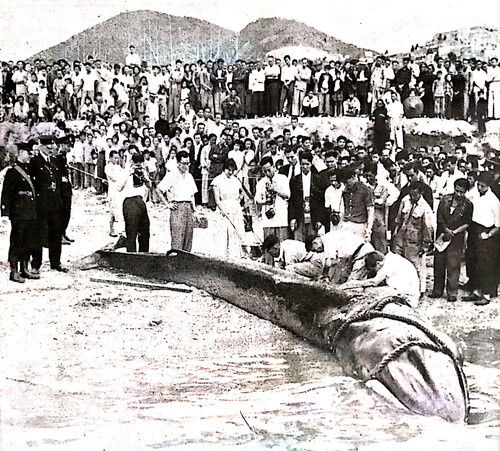 |
The dead whale was tied onto the Research Vessel Alister Hardy and towed to Aberdeen on April 12, 1955. Photo credit: Spectrum, No. 4, May 1955 | Using a high tide the next day, the whale was beached in front of the Government Fisheries Division’s Headquarters in Aberdeen where it was measured and dissected by HKU scientists. Photo credit: Spectrum, No. 4, May 1955 |
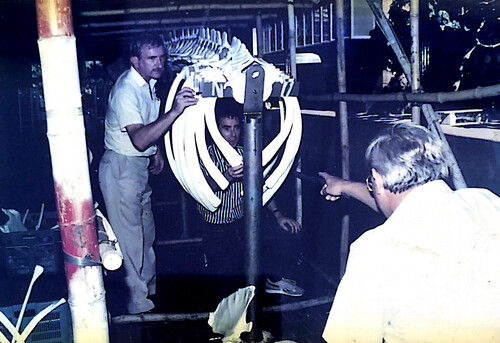 | 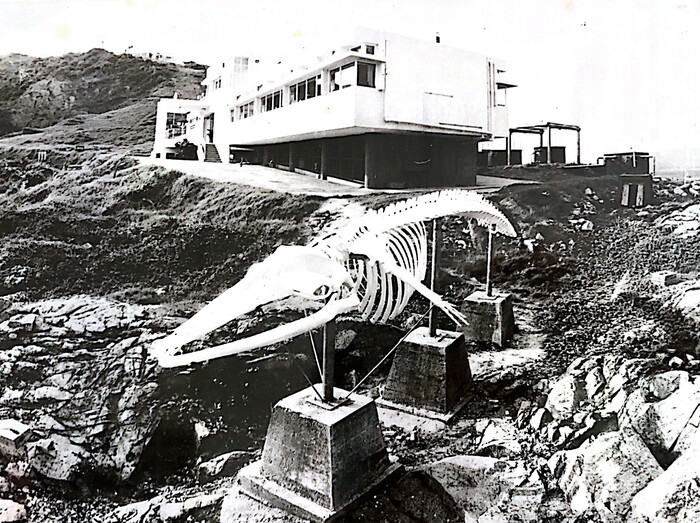 |
| After years housed indoors at HKU campus, academics from various departments worked to rebuild the skeleton and take it back to the sea. | SWIMS has been the whale’s steward since it first moved there in the 1990s. |
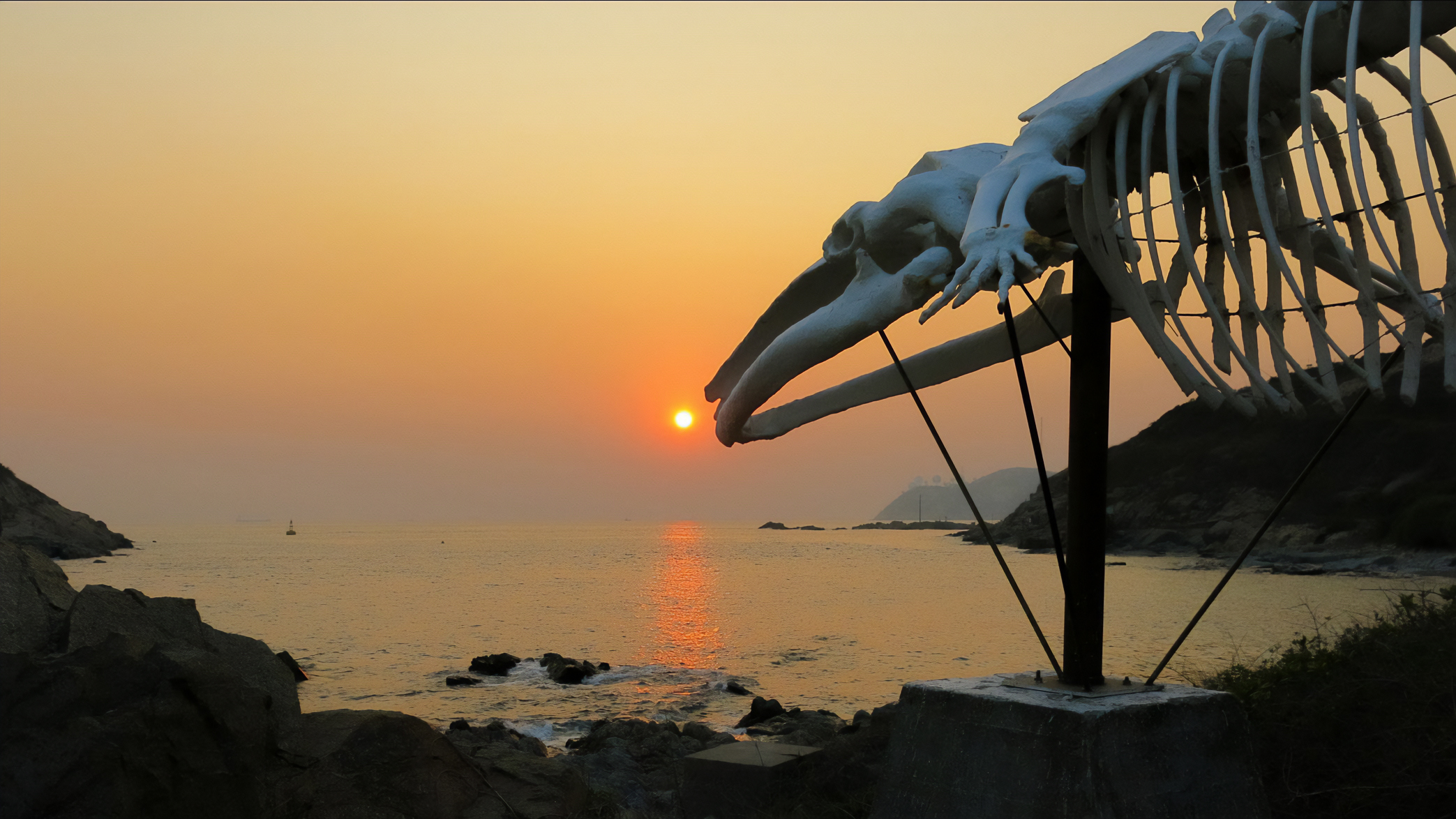 | |
Whale bone before damage. Photo credit: Dr Jacky Ip | The damaged skeletal display of the whale after being ravaged by super typhoon Mangkhut in September 2018. |





